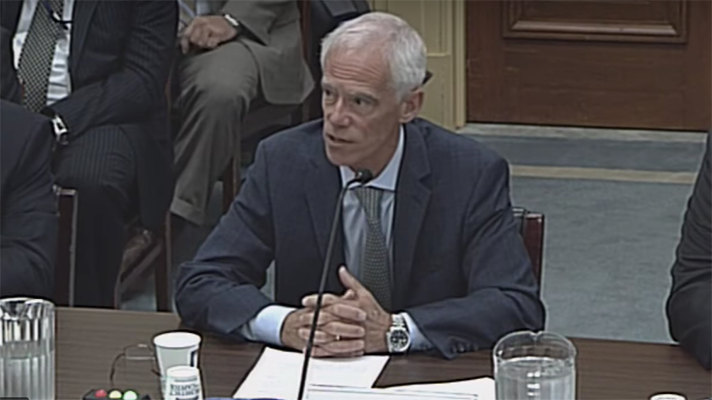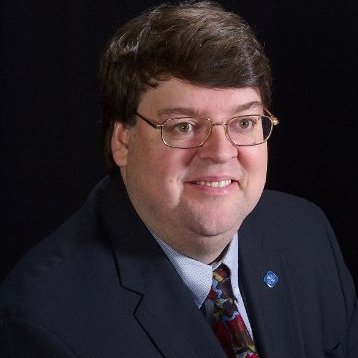health care industry
See the following -
A Bureaucratic Mess Leads to Shutdown of HHS Cybersecurity Center
 In May 2017, the Department of Health and Human Services decided to stand up its own version of the Department of Homeland Security’s National Cybersecurity and Communications Integration Center in order to address the increasing cybersecurity risks to the health care sector. But creating the Health Cybersecurity and Communications Integration Center, or HCCIC, was the easy part. Soon after, the newfound center landed in the spotlight, sparking agency and industry drama about the role and scope of HHS authorities in information sharing.
In May 2017, the Department of Health and Human Services decided to stand up its own version of the Department of Homeland Security’s National Cybersecurity and Communications Integration Center in order to address the increasing cybersecurity risks to the health care sector. But creating the Health Cybersecurity and Communications Integration Center, or HCCIC, was the easy part. Soon after, the newfound center landed in the spotlight, sparking agency and industry drama about the role and scope of HHS authorities in information sharing.
- Login to post comments
Gibson: VA Pursuing Schedule Fix On Multiple Tracks
There are 11 known defects in the scheduling system, part of the VistA health record system, and those "are being patched as we speak," Gibson told members of the Senate Veterans Affairs Committee on July 16. In addition, the VA is developing four new interfaces to make it easier for schedulers to access the system, and to give veterans the ability to access their own appointments data through the VA...
- Login to post comments
How Can Open Source Projects Support Themselves in Health Care?
 High prices and poor usability hasn't driven the health care industry away from megalithic, proprietary applications. What may win the industry over to open source (in addition to the hope of fixing those two problems) is its promises of easy customization, infinite flexibility, extensibility, and seamless data exchange. As we will see, open platforms also permit organizations to collaborate on shared goals, which appeals to many participants. But if open source projects can't charge hundreds of thousands of dollars for installation as their commercial competitors do, how will they pay their developers and hold together as projects? This article compares three major organizations in the open source health care space: the tranSMART Foundation, Open Health Tools (OHT), and Open mHealth. Each has taken a different path to the universal goal of stability.
High prices and poor usability hasn't driven the health care industry away from megalithic, proprietary applications. What may win the industry over to open source (in addition to the hope of fixing those two problems) is its promises of easy customization, infinite flexibility, extensibility, and seamless data exchange. As we will see, open platforms also permit organizations to collaborate on shared goals, which appeals to many participants. But if open source projects can't charge hundreds of thousands of dollars for installation as their commercial competitors do, how will they pay their developers and hold together as projects? This article compares three major organizations in the open source health care space: the tranSMART Foundation, Open Health Tools (OHT), and Open mHealth. Each has taken a different path to the universal goal of stability.
- Login to post comments
Mr Fax goes to Washington D.C.
 Recently, I had the honor of travelling to Washington D.C. to speak on behalf of a substantive and important policy issue, digital cloud fax technology (DCFT) and interoperability in the health care industry. Federal officials are on a mission to create a seamless exchange of personal health information (PHI) and electronic health records (EHR). That's the layman's definition of interoperability. Although I am a layman on Capitol Hill, J2 Global Inc (J2), a provider of eFax Cloud Services remains a champion for DCFT. We are a key player in the field and we used our influence to educate federal officials about an issue that is extremely important to us and to our customers. Specifically, we were there to speak about a proposed rule from the Centers for Medicare & Medicaid Services (CMS).
Recently, I had the honor of travelling to Washington D.C. to speak on behalf of a substantive and important policy issue, digital cloud fax technology (DCFT) and interoperability in the health care industry. Federal officials are on a mission to create a seamless exchange of personal health information (PHI) and electronic health records (EHR). That's the layman's definition of interoperability. Although I am a layman on Capitol Hill, J2 Global Inc (J2), a provider of eFax Cloud Services remains a champion for DCFT. We are a key player in the field and we used our influence to educate federal officials about an issue that is extremely important to us and to our customers. Specifically, we were there to speak about a proposed rule from the Centers for Medicare & Medicaid Services (CMS).
- Login to post comments
Regarding Open Source, Security, and Cloud Migration, Old Prejudices Die Hard in Health Care
 Although the health care industry has made great strides in health IT, large numbers of providers remain slow to reap the benefits of a “digital transformation”. Health care organizations focus on what they get paid for and neglect other practices that would improve care and security. At conferences and meetings year and after year, I have to listen to health care leaders tediously explode the same myths and explain the same principles over and over. In this article I'll concentrate on the recent EXPO.health conference, put on in Boston by John Lynn's Healthcare Scene, where the topics of free and open source EHRs, security, and cloud migration got mired down in rather elementary discussions.
Although the health care industry has made great strides in health IT, large numbers of providers remain slow to reap the benefits of a “digital transformation”. Health care organizations focus on what they get paid for and neglect other practices that would improve care and security. At conferences and meetings year and after year, I have to listen to health care leaders tediously explode the same myths and explain the same principles over and over. In this article I'll concentrate on the recent EXPO.health conference, put on in Boston by John Lynn's Healthcare Scene, where the topics of free and open source EHRs, security, and cloud migration got mired down in rather elementary discussions.
- Login to post comments
What the IoT can learn from the health care industry
 After a short period of excitement and rosy prospects in the movement we’ve come to call the Internet of Things (IoT), designers are coming to realize that it will survive or implode around the twin issues of security and user control: a few electrical failures could scare people away for decades, while a nagging sense that someone is exploiting our data without our consent could sour our enthusiasm. Early indicators already point to a heightened level of scrutiny — Senator Ed Markey’s office, for example, recently put the automobile industry under the microscope for computer and network security. Read More »
After a short period of excitement and rosy prospects in the movement we’ve come to call the Internet of Things (IoT), designers are coming to realize that it will survive or implode around the twin issues of security and user control: a few electrical failures could scare people away for decades, while a nagging sense that someone is exploiting our data without our consent could sour our enthusiasm. Early indicators already point to a heightened level of scrutiny — Senator Ed Markey’s office, for example, recently put the automobile industry under the microscope for computer and network security. Read More »
- Login to post comments
Why the Touchstone Project is so important to HL7 FHIR
 The AEGIS Touchstone Test Platform, launched at the most recent HL7 FHIR Connectathon in Atlanta, Georgia in October 2015, provides the means to help guide FHIR implementations toward a high degree of conformance and interoperability within a continuous testing and integration model. As stated by HL7 CEO Charles Jaffe, MD, PhD, “A successful testing program also provides FHIR development teams at HL7 with the essential infrastructure that is critical for all of our stakeholders."
The AEGIS Touchstone Test Platform, launched at the most recent HL7 FHIR Connectathon in Atlanta, Georgia in October 2015, provides the means to help guide FHIR implementations toward a high degree of conformance and interoperability within a continuous testing and integration model. As stated by HL7 CEO Charles Jaffe, MD, PhD, “A successful testing program also provides FHIR development teams at HL7 with the essential infrastructure that is critical for all of our stakeholders."
- Login to post comments
ZibdyHealth Sub-Optimal Data Exchange Standards
 Reformers in the health care field, quite properly, emphasize new payment models and culture changes to drive improvements in outcomes. But we can’t ignore the barriers that current technology puts in the way of well-meaning reformers. This article discusses one of the many companies offering a patient health record (PHR) and the ways they’ve adapted to a very flawed model for data storage and exchange. I had the honor to be contacted by Dr. Hirdey Bhathal, CEO/Founder of ZibdyHealth. Like many companies angling to develop a market for PHRs, ZibdyHealth offers a wide range of services to patients...
Reformers in the health care field, quite properly, emphasize new payment models and culture changes to drive improvements in outcomes. But we can’t ignore the barriers that current technology puts in the way of well-meaning reformers. This article discusses one of the many companies offering a patient health record (PHR) and the ways they’ve adapted to a very flawed model for data storage and exchange. I had the honor to be contacted by Dr. Hirdey Bhathal, CEO/Founder of ZibdyHealth. Like many companies angling to develop a market for PHRs, ZibdyHealth offers a wide range of services to patients...
- Login to post comments